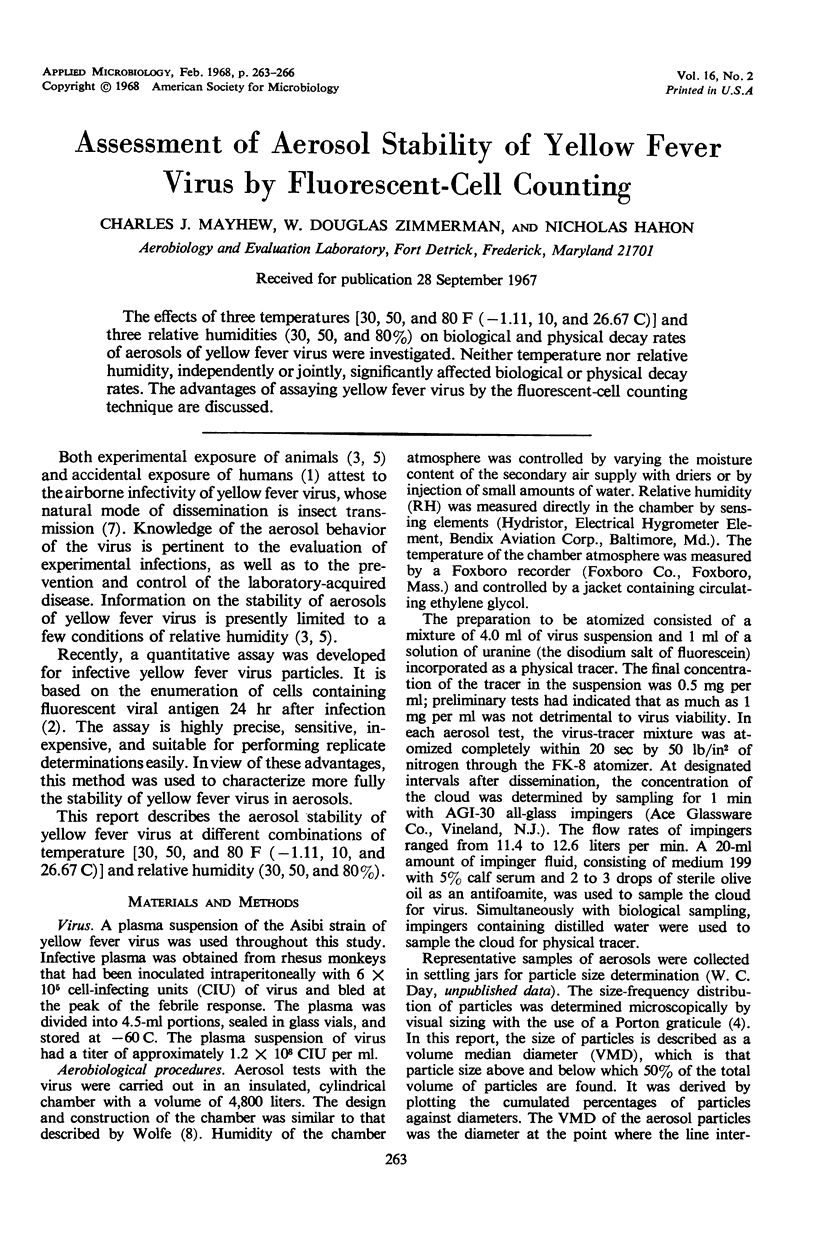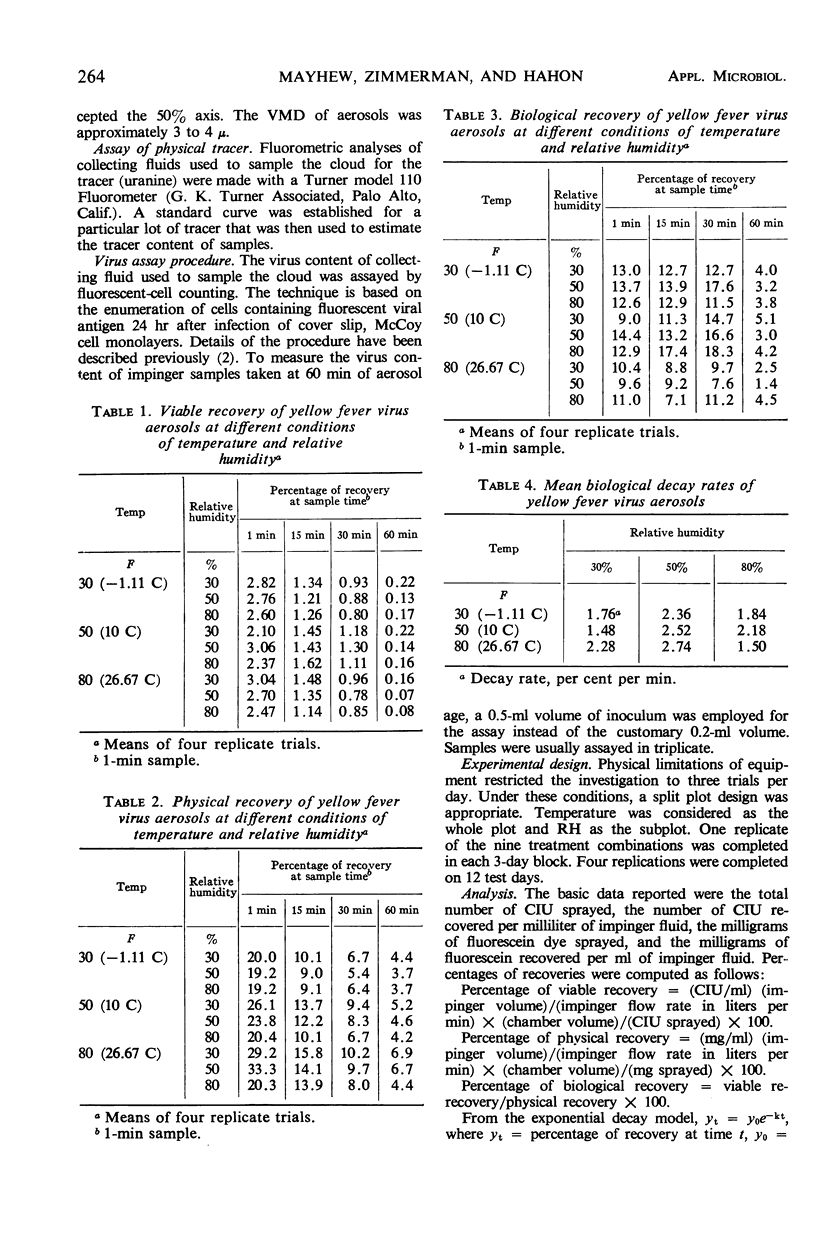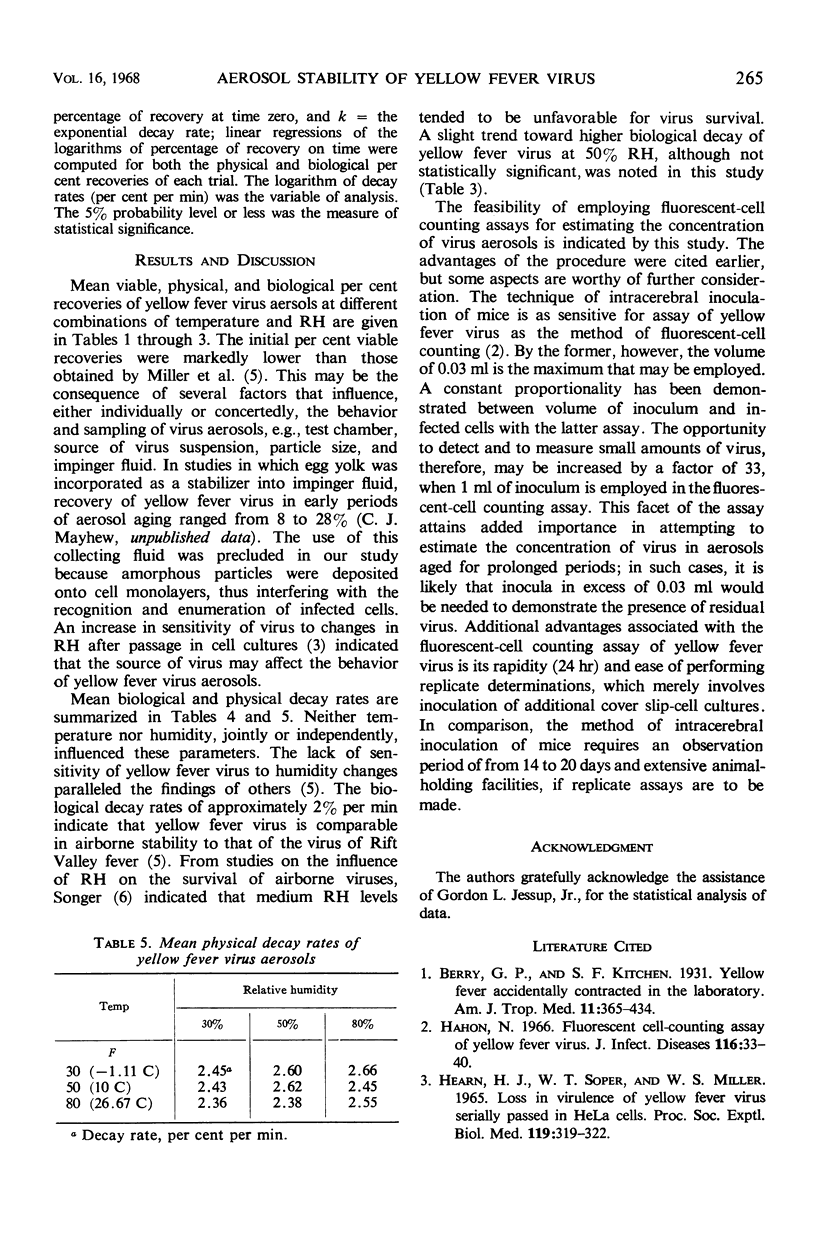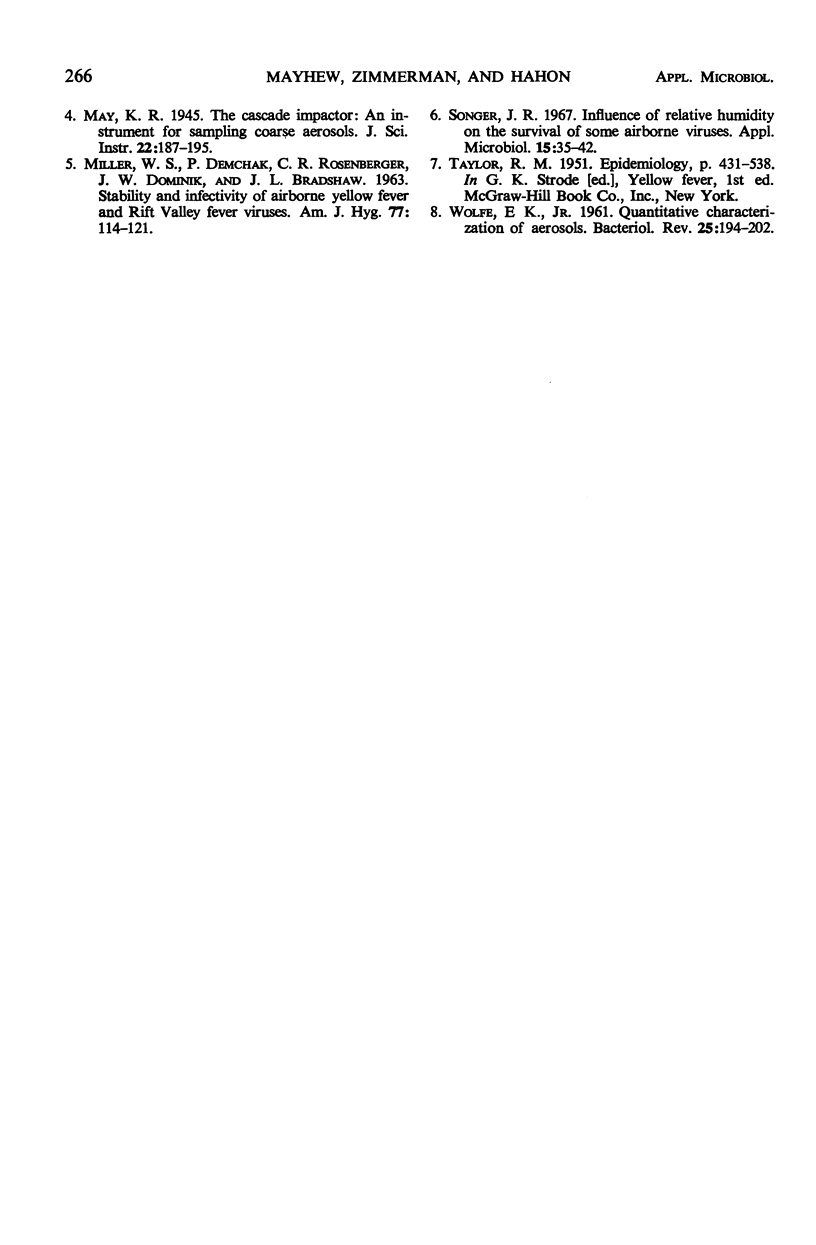Abstract
The effects of three temperatures [30, 50, and 80 F (-1.11, 10, and 26.67 C)] and three relative humidities (30, 50, and 80%) on biological and physical decay rates of aerosols of yellow fever virus were investigated. Neither temperature nor relative humidity, independently or jointly, significantly affected biological or physical decay rates. The advantages of assaying yellow fever virus by the fluorescent-cell counting technique are discussed.
Full text
PDF



Selected References
These references are in PubMed. This may not be the complete list of references from this article.
- HEARN H. J., Jr, SOPER W. T., MILLER W. S. LOSS IN VIRULENCE OF YELLOW FEVER VIRUS SERIALLY PASSED IN HELA CELLS. Proc Soc Exp Biol Med. 1965 Jun;119:319–322. doi: 10.3181/00379727-119-30167. [DOI] [PubMed] [Google Scholar]
- Hahon N. Fluorescent cell-counting assay of yellow fever virus. J Infect Dis. 1966 Feb;116(1):33–40. doi: 10.1093/infdis/116.1.33. [DOI] [PubMed] [Google Scholar]
- Songer J. R. Influence of relative humidity on the survival of some airborne viruses. Appl Microbiol. 1967 Jan;15(1):35–42. doi: 10.1128/am.15.1.35-42.1967. [DOI] [PMC free article] [PubMed] [Google Scholar]
- WOLFE E. K., Jr Quantitative characterization of aerosols. Bacteriol Rev. 1961 Sep;25:194–202. doi: 10.1128/br.25.3.194-202.1961. [DOI] [PMC free article] [PubMed] [Google Scholar]


